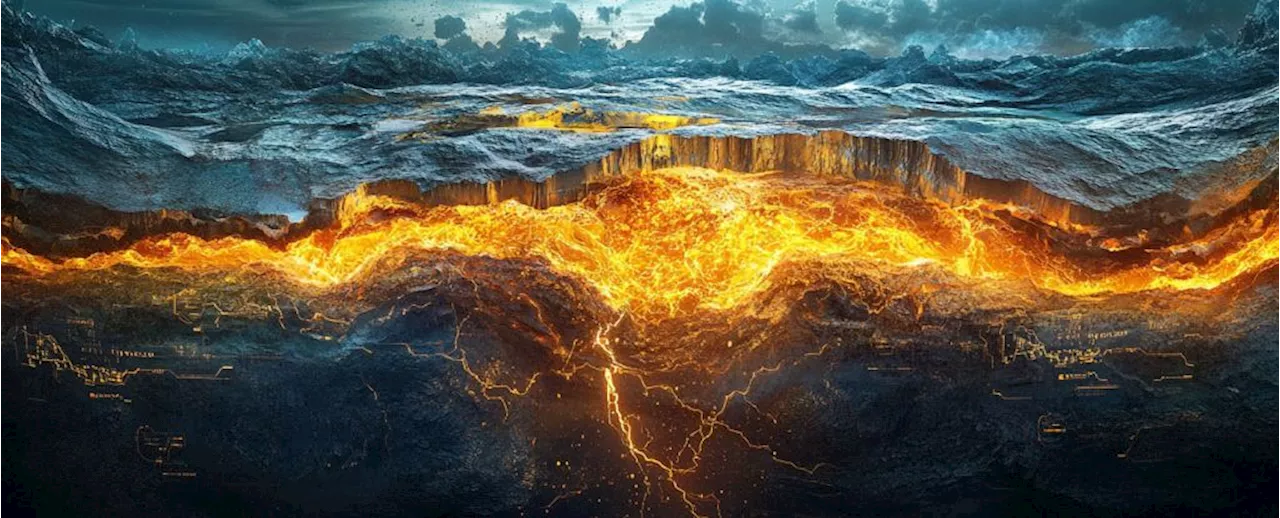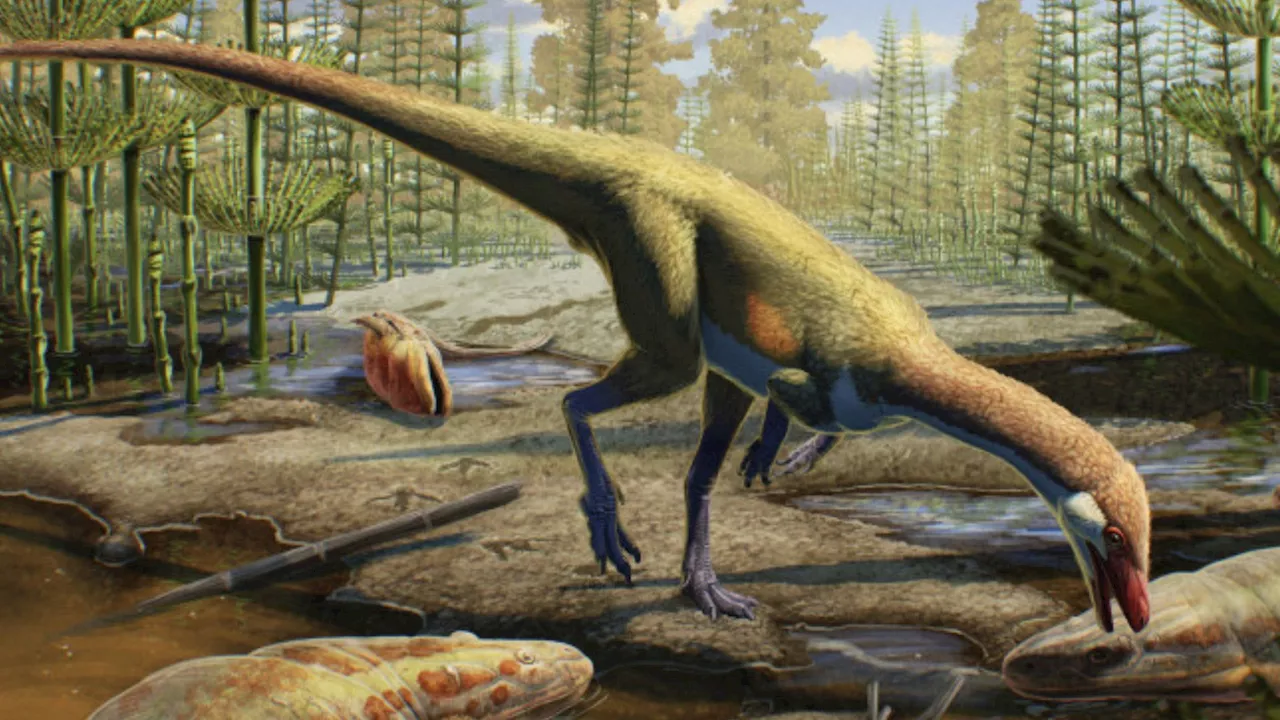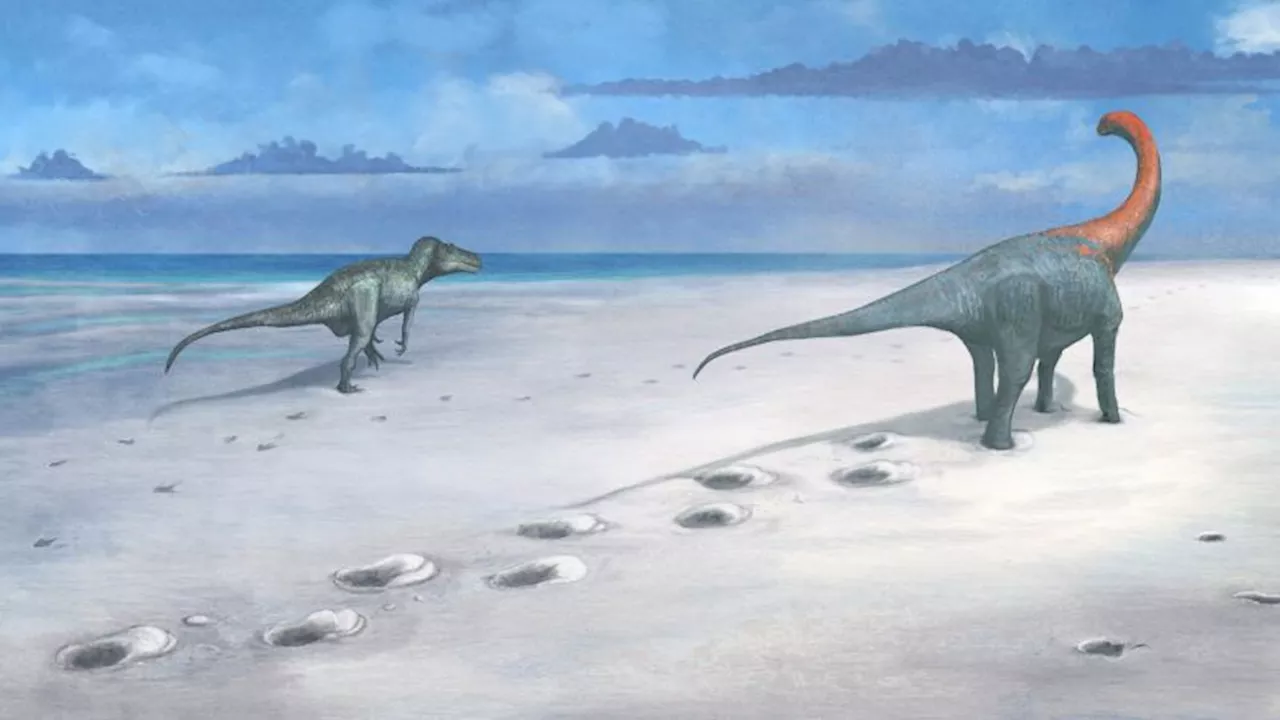A new study challenges the long-held belief that massive sulfur releases from the Chicxulub impact crater 66 million years ago were the primary cause of the dinosaur extinction. Using groundbreaking measurements, researchers found that the amount of sulfur released was significantly less than previous estimates, suggesting a milder 'impact winter' and potentially contributing to the survival of some species.
Previous studies have posited that the mass extinction that wiped the dinosaurs off the face of the Earth was caused by the release of large volumes of sulfur from rocks within the Chicxulub impact crater 66 million years ago. A new study questions this scenario. Using groundbreaking empirical measurements of sulfur within the related Cretaceous-Paleogene boundary layer, the international team has demonstrated that the role of sulfur during the extinction has been overestimated.
Most previous studies considered sulfur as the most crucial factor in driving the cooling and extinction after the impact event. However, estimates of the volume of sulfate aerosols released from the vaporization of the impacted rocks in Mexico have varied widely over two orders of magnitude from one study to another.
The scientists revealed that a total of 67 ± 39 billion tons of sulfur were released, approximately five times less than previously estimated in numerical models. This suggests a milder"impact winter" than previously believed, leading to a less severe temperature decline and faster climate recovery, which could have contributed to the survival of at least 25% of species on Earth following the event.
DINOSAUR EXTINCTION CHICXULUB IMPACT SULFUR IMPACT WINTER CLIMATE CHANGE
United States Latest News, United States Headlines
Similar News:You can also read news stories similar to this one that we have collected from other news sources.
 Sulfur Plays Key Role in Transporting Gold to the SurfaceTwo new studies shed light on the process of gold transport from Earth's mantle to the surface, highlighting the crucial role of sulfur.
Sulfur Plays Key Role in Transporting Gold to the SurfaceTwo new studies shed light on the process of gold transport from Earth's mantle to the surface, highlighting the crucial role of sulfur.
Read more »
 Ancient Dinosaur Fossil Challenges Timeline of Dinosaur EvolutionNew analysis of a newly discovered dinosaur fossil in Wyoming suggests dinosaurs roamed the northern hemisphere millions of years earlier than previously thought. This finding challenges the prevailing theory that dinosaurs originated in Gondwana and later spread to Laurasia. The fossil, estimated to be around 230 million years old, is now the oldest known Laurasian dinosaur.
Ancient Dinosaur Fossil Challenges Timeline of Dinosaur EvolutionNew analysis of a newly discovered dinosaur fossil in Wyoming suggests dinosaurs roamed the northern hemisphere millions of years earlier than previously thought. This finding challenges the prevailing theory that dinosaurs originated in Gondwana and later spread to Laurasia. The fossil, estimated to be around 230 million years old, is now the oldest known Laurasian dinosaur.
Read more »
 Chicken-Sized Dinosaur Found in Wyoming Pushes Back Timeline for Dinosaur Presence in North AmericaPaleontologists in Wyoming have unearthed the oldest dinosaur ever found in North America, a small, chicken-sized creature named Ahvaytum bahndooiveche. This discovery pushes back the timeline for dinosaur presence in the northern hemisphere by millions of years, challenging the prevailing theory that dinosaurs originated in the southern hemisphere and later migrated north.
Chicken-Sized Dinosaur Found in Wyoming Pushes Back Timeline for Dinosaur Presence in North AmericaPaleontologists in Wyoming have unearthed the oldest dinosaur ever found in North America, a small, chicken-sized creature named Ahvaytum bahndooiveche. This discovery pushes back the timeline for dinosaur presence in the northern hemisphere by millions of years, challenging the prevailing theory that dinosaurs originated in the southern hemisphere and later migrated north.
Read more »
 200 Dinosaur Footprints Unearthed in England, Forming 'Dinosaur Highway'A remarkable discovery of nearly 200 dinosaur footprints dating back 166 million years has been made in Oxfordshire, England. Dubbed the 'dinosaur highway', this extensive track site is the largest known in the UK and offers valuable insights into the movements and behavior of prehistoric creatures.
200 Dinosaur Footprints Unearthed in England, Forming 'Dinosaur Highway'A remarkable discovery of nearly 200 dinosaur footprints dating back 166 million years has been made in Oxfordshire, England. Dubbed the 'dinosaur highway', this extensive track site is the largest known in the UK and offers valuable insights into the movements and behavior of prehistoric creatures.
Read more »
 Chicken-Sized Dinosaur Found in Wyoming Could Rewrite Dinosaur HistoryA new dinosaur species discovered in Wyoming, USA, named 'Naatsets' by the Eastern Shoshone Tribe, is believed to be the oldest dinosaur found in North America, challenging the conventional timeline of dinosaur evolution.
Chicken-Sized Dinosaur Found in Wyoming Could Rewrite Dinosaur HistoryA new dinosaur species discovered in Wyoming, USA, named 'Naatsets' by the Eastern Shoshone Tribe, is believed to be the oldest dinosaur found in North America, challenging the conventional timeline of dinosaur evolution.
Read more »
 Meteorite Impact Confirmed as Ultimate Cause of Dinosaur ExtinctionScientists conclude that while volcanic eruptions caused a temporary cold period, the effects had worn off thousands of years before the meteorite impact, making the impact the definitive cause of the dinosaur extinction.
Meteorite Impact Confirmed as Ultimate Cause of Dinosaur ExtinctionScientists conclude that while volcanic eruptions caused a temporary cold period, the effects had worn off thousands of years before the meteorite impact, making the impact the definitive cause of the dinosaur extinction.
Read more »
